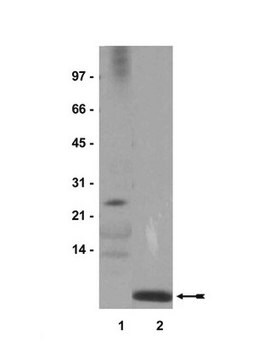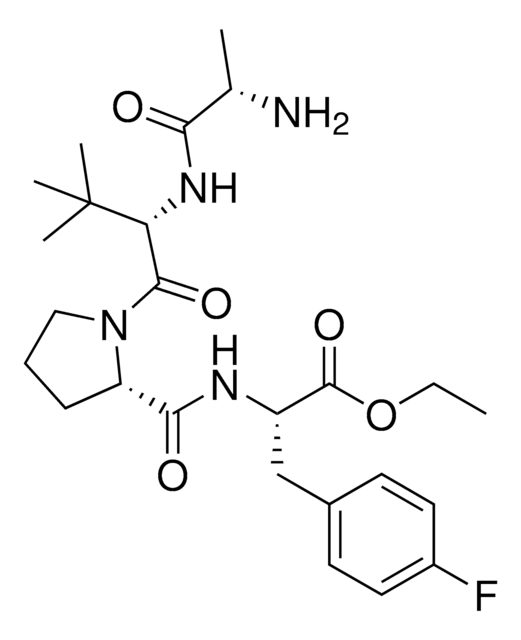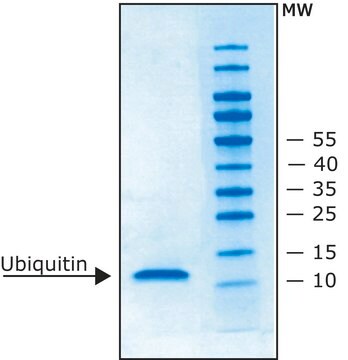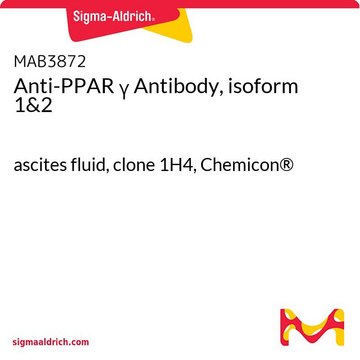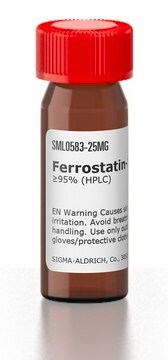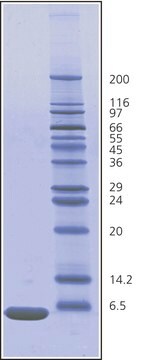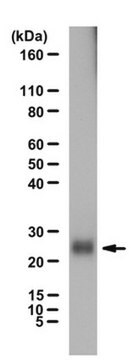Recommended Products
biological source
rabbit
Quality Level
antibody form
serum
antibody product type
primary antibodies
clone
polyclonal
species reactivity
bovine, eukaryotes, human
manufacturer/tradename
Chemicon®
technique(s)
immunohistochemistry (formalin-fixed, paraffin-embedded sections): suitable
western blot: suitable
NCBI accession no.
UniProt accession no.
shipped in
dry ice
target post-translational modification
unmodified
Gene Information
human ... UBAP2(55833)
Specificity
Ubiquitin (76 amino acid, 8.5 kDa). Shows staining of neurofibrillary tangles, neurites in senile plaques and a subset of neuronal processes. No reactivity seen to tau, neurofilament or microtubule-associated proteins.
Immunogen
Purified uboquitin covalently coupled to KLH using glutaraldehde.
Application
Anti-Ubiquitin Antibody detects level of Ubiquitin & has been published & validated for use in WB, IH, IH(P).
Immunohistochemistry: 1:1,000-1:5,000. Tissue fixed in 10% formalin, Bouin′s fixative for 1-2 days and embedded in paraffin, or unfixed frozen tissues may be used.
Immunoblotting: 1:1,000-1:5,000.
Optimal working dilutions must be determined by end user.
Immunoblotting: 1:1,000-1:5,000.
Optimal working dilutions must be determined by end user.
Research Category
Protein Trafficking
Protein Trafficking
Research Sub Category
Ubiquitin & Ubiquitin Metabolism
Ubiquitin & Ubiquitin Metabolism
Physical form
Neat rabbit antisera with 10 mM sodium azide.
Storage and Stability
Maintain at -20°C in undiluted aliquots for up to 12 months. Avoid repeated freeze/thaw cycles.
Legal Information
CHEMICON is a registered trademark of Merck KGaA, Darmstadt, Germany
Disclaimer
Unless otherwise stated in our catalog or other company documentation accompanying the product(s), our products are intended for research use only and are not to be used for any other purpose, which includes but is not limited to, unauthorized commercial uses, in vitro diagnostic uses, ex vivo or in vivo therapeutic uses or any type of consumption or application to humans or animals.
Not finding the right product?
Try our Product Selector Tool.
Storage Class Code
10 - Combustible liquids
WGK
WGK 1
Certificates of Analysis (COA)
Search for Certificates of Analysis (COA) by entering the products Lot/Batch Number. Lot and Batch Numbers can be found on a product’s label following the words ‘Lot’ or ‘Batch’.
Already Own This Product?
Find documentation for the products that you have recently purchased in the Document Library.
Identification of Salmonella Typhimurium Deubiquitinase SseL Substrates by Immunoaffinity Enrichment and Quantitative Proteomic Analysis.
Nakayasu, ES; Sydor, MA; Brown, RN; Sontag, RL; Sobreira, TJ; Slysz, GW; Humphrys et al.
Journal of Proteome Research null
Jackalina M Van Kampen
Methods in molecular biology (Clifton, N.J.), 1806, 255-267 (2018-06-30)
Progranulin (PGRN) is a multifunctional protein that is widely expressed throughout the brain, where it has been shown to be a critical regulator of CNS inflammation (Ahmed et al., J Neuroinflammation 4:7, 2007; Yin et al., J Exp Med 207:117-128
Nataša Bauer et al.
Frontiers in plant science, 10, 1469-1469 (2019-12-12)
MATH-BTB proteins are known to act as substrate-specific adaptors of CUL3-based E3 ligases in the ubiquitin proteasome pathway. Their BTB domain binds to CUL3 scaffold proteins and the less conserved MATH domain targets a highly diverse collection of substrate proteins
Intracellular retention, degradation, and signaling of glycosylation-deficient FGFR2 and craniosynostosis syndrome-associated FGFR2C278F.
Hatch, NE; Hudson, M; Seto, ML; Cunningham, ML; Bothwell, M
The Journal of Biological Chemistry null
Sperm proteasomes degrade sperm receptor on the egg zona pellucida during mammalian fertilization.
Zimmerman, SW; Manandhar, G; Yi, YJ; Gupta, SK; Sutovsky, M; Odhiambo, JF; Powell et al.
Testing null
Our team of scientists has experience in all areas of research including Life Science, Material Science, Chemical Synthesis, Chromatography, Analytical and many others.
Contact Technical Service
